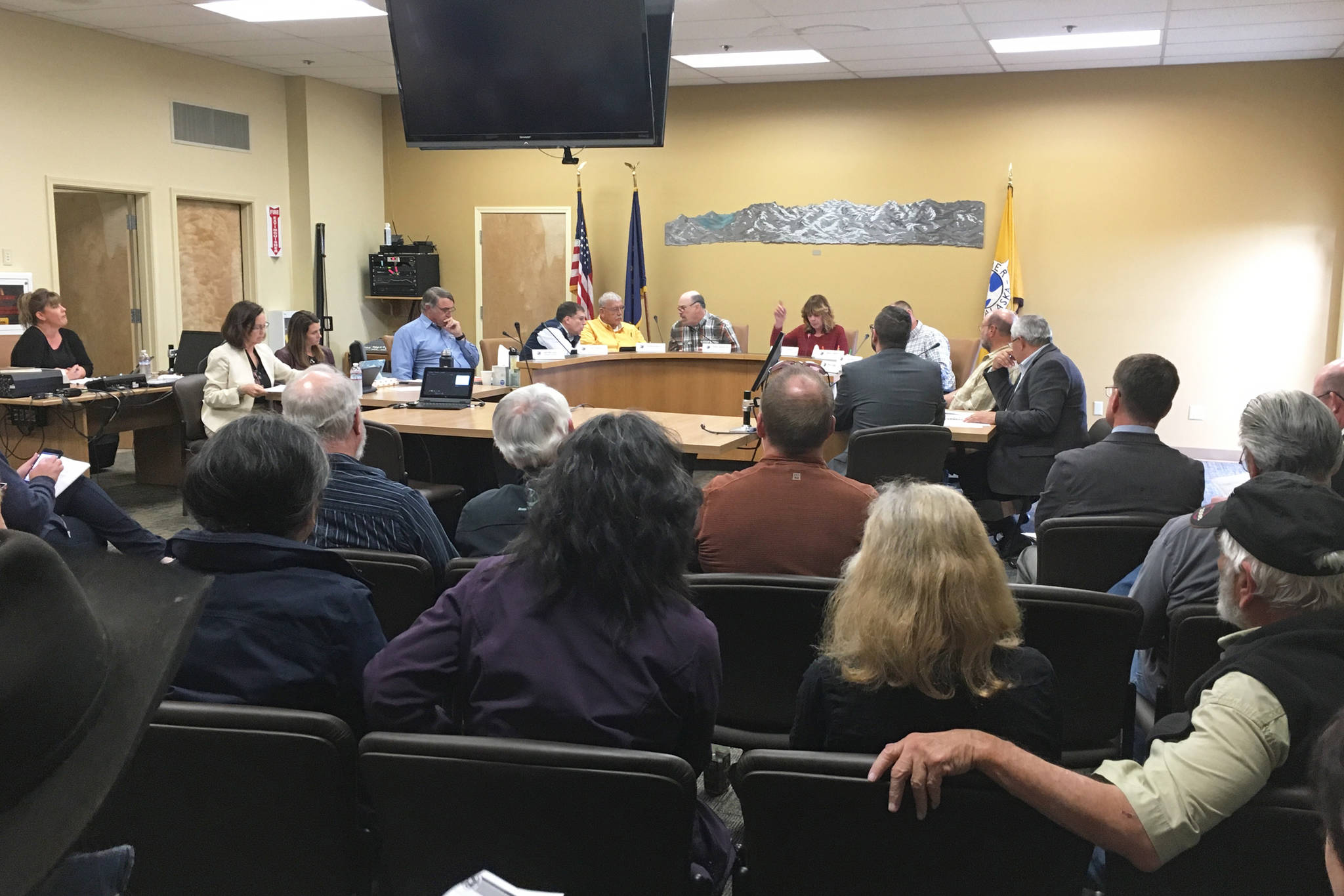While no major action was taken at Tuesday’s Kenai Peninsula Borough Assembly meeting, held in Homer, community members still had a lot to say.
Assembly President Wayne Ogle joked at the end of the meeting that they had set a record for the number of comments on an item on the consent agenda. He was talking about an ordinance that was on the consent agenda to be introduced, not voted on, that would authorize the borough to go out to bond to the tune of about $5.5 million for a new school in Kachemak Selo.
Since the ordinance was on the consent agenda, it was introduced along with several other measures when the consent agenda was approved. The public hearing for the ordinance is on Oct. 9. Assembly members said they were introducing it now so that everything will be in order if the ballot proposition to allow the borough to bond for the school passes in the Oct. 2 borough election.
Among the community members who had something to say about the Kachemak Selo school issue were two members of the school board, the school’s principal, Mike Wojciak, Homer City Council member Heath Smith and state Rep. Paul Seaton.
Most commenters voiced their support of the ordinance and the community at the head of Kachemak Bay getting a new school. The approximately 50 students get a K-12 education in three separate buildings the Kenai Peninsula Borough School District reports have outlived their function.
Others said the price tag of about $15.5 million for the school, with about $5.5 coming from the borough and the rest from a state grant, is too much for the number of students that would use it. They asked the assembly to think of other creative ways of solving the issue.
Smith, the council member, said that something ought to be done in the future to see if there can be some flexibility to state regulations when it comes to minimum standards for building a school. The borough’s answer to those who say the project is too big and expensive is that the borough has no choice — it is mandated to build the school according to state standards, which dictate the footprint of the facility.
In Alaska, the minimum number of students needed for a school is 10.
There was talk in 2015 about increasing the minimum student count from 10 to 25, amid a rush to close the state’s then-multibillion dollar budget deficit. The 10-student minimum standard dates back to the late 1990s. When enrollment rises to 10 students, the state deploys a base of funding which is enough to operate a school, the Alaska Dispatch News reported.
Assembly member Kelly Cooper said she’d be open to working with Smith on seeing whether there are changes that can be made with regard to state standards, but said that should be a conversation held after Kachemak Selo gets the new school.
“I would caution that we shouldn’t make that community the sacrificial lamb,” she said.
Seaton commented to give a legislative perspective. He reminded the assembly and listeners that the only reason the state gave the borough the approximately $10 million grant it did is because Kachemak Selo, while part of the school district, is technically off the official road system. Residents use an unpaved switchback trail to get down a ridge to the village, set back from the beach.
A borough work group originally tasked with looking for solutions for Kachemak Selo looked into the possibility of making the trail an official road so that students in the village could just go to another school. They found it would cost $60 million to do that, according to a borough staff member, and it was deemed unrealistic.
“It is a great deal, there’s no arguing that,” Smith said of the state grant. “All of the indicators are there that this is the right way to go, but until we get to the point to where we’re going to re-think what is absolutely necessary in order to achieve the goal, then we’re never going to get out of the mire.”
Seaton and several other commenters told the borough they believe this is the best deal the borough will get when it comes to building a new school. If the bond proposition fails, Seaton has said it is likely the borough would have to go out to bond for the entire cost of $15.5 million.
“We’ve worked really hard,” he said. “This is the best deal that the borough can ever get.”
Reach Megan Pacer at mpacer@homernews.com.



